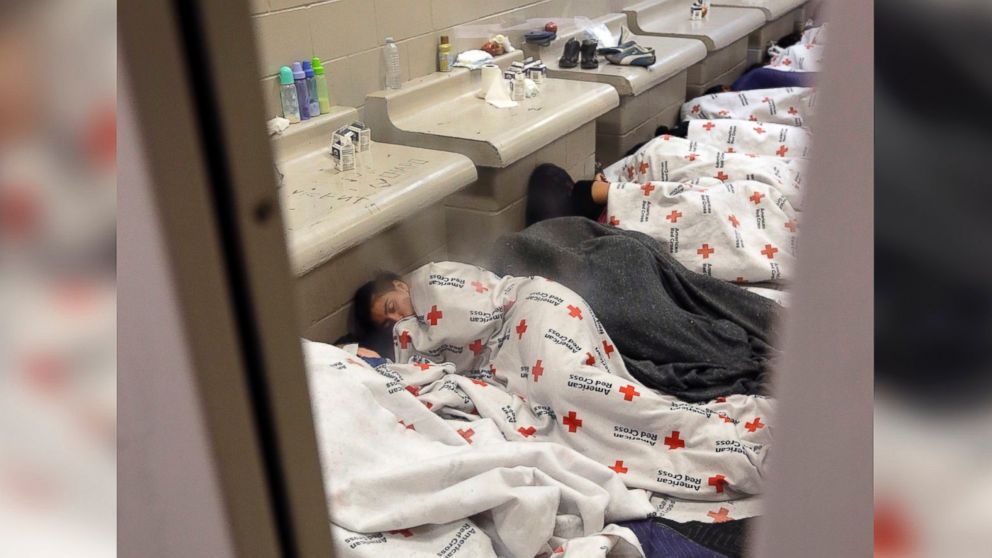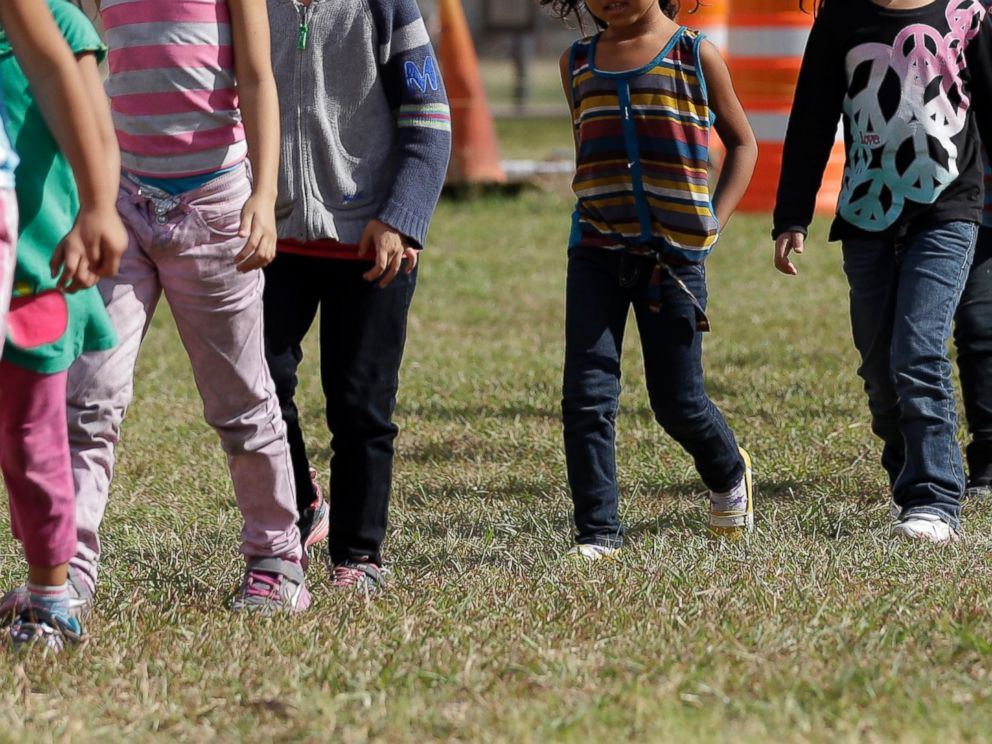
Republicans -- and even a few Democrats -- have pounced on President Obama for his refusal to visit the U.S.-Mexico border where hoards of unaccompanied minors from Central America who have crossed into the country illegally are being held in overburdened, overcrowded border patrol facilities.
There’s no telling for sure whether a presidential visit to the border would be instructive or just “theater,” as Obama said Wednesday, and it would depend on where the president visited. But below are a selection of images and video from border towns like Brownsville and McAllen, and other areas that offer a glimpse of the crisis and what the president might see.
Hundreds of young children apprehended at the border are crowded into sanitary but impersonal detention cells, their faces pressed listlessly against the glass.

Though federal law mandates they spend only 72 hours at these facilities, U.S. Customs and Border Patrol has admitted children are not removed that quickly.

Children, wrapped only in Red Cross blankets, sleep on cement floors.

Fenced in by chain link and barbed wire, they’re allowed 30 minutes of outside play daily. They bathe and change their clothes in shower trailers erected next to the detention facility, ABC’s Jim Avila reports:

Children accompanied by parents may be released. Many will go on to visit charity funded-facilities that provide food, clothing and medical care.
Many are still dehydrated and hungry, our colleagues at Fusion report.
“They come with nothing… they come sad,” one volunteer told Fusion's Geneva Sands. “What we see is that they need help, they’re looking for the American dream and the way they come in is not right.”
Obama, who is visiting Texas this week, says he’s “not interested in photo ops” and insists a border visit wouldn’t enhance his understanding of what he, himself, has called a “humanitarian crisis.”
“There is nothing that is taking place down there that I am not intimately aware of and briefed on,” he said Wednesday in Dallas, urging Congress to authorize $3.7 million to cope with the crisis.
White House Press Secretary Josh Earnest told reporters that Obama wants to emphasize solutions over optics.
“The president is well aware of exactly what’s happening on the border, and what we’re focused on right now are not political statements that would be made with an appearance, but rather with specific, concrete action,” Earnest added.
But some politicians from both sides of the aisle disagree.
Rep. Henry Cuellar, D-Texas, told ABC News that the president risks looking “detached,” calling the optics “horrible.”
“If you go down to the border, he has to see the kids that I’ve seen, young girls, young boys, you know, that have come through very difficult situations. It is a humanitarian crisis, and he can either do two things,” Cuellar said. “One, as a leader, he can be defiant and say I’m going to roll up my sleeves and see the humanitarian crisis. Or he can look detached, appear detached and say I’m doing everything long distance.”
( The president previously visited the Texas-Mexico border in 2011.)
No comments:
Post a Comment